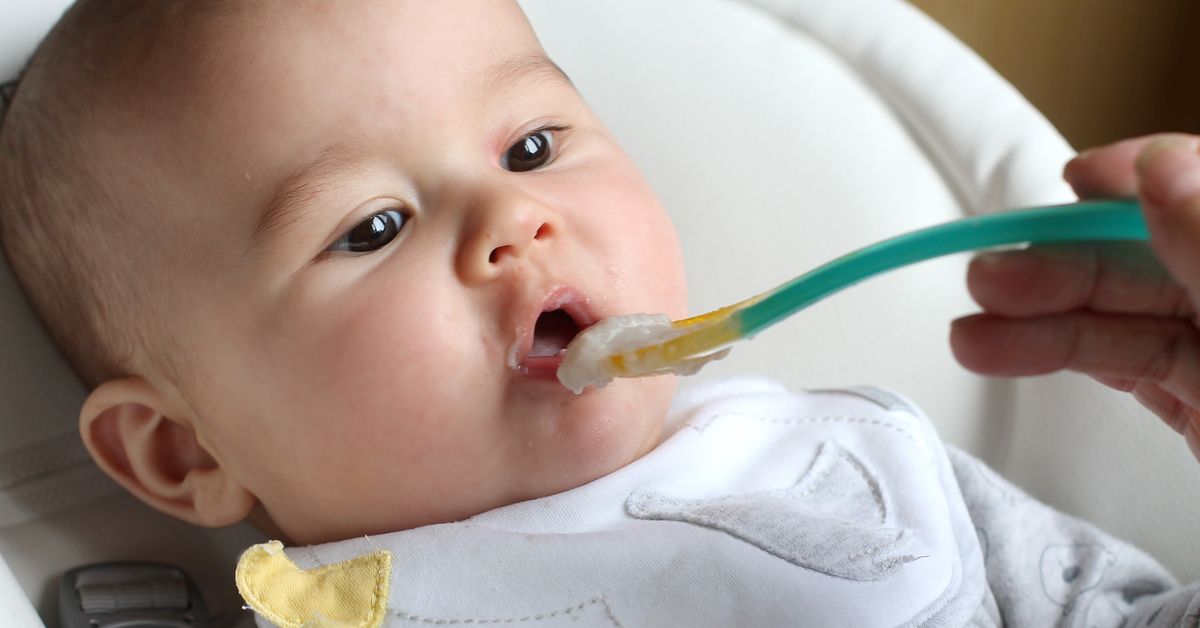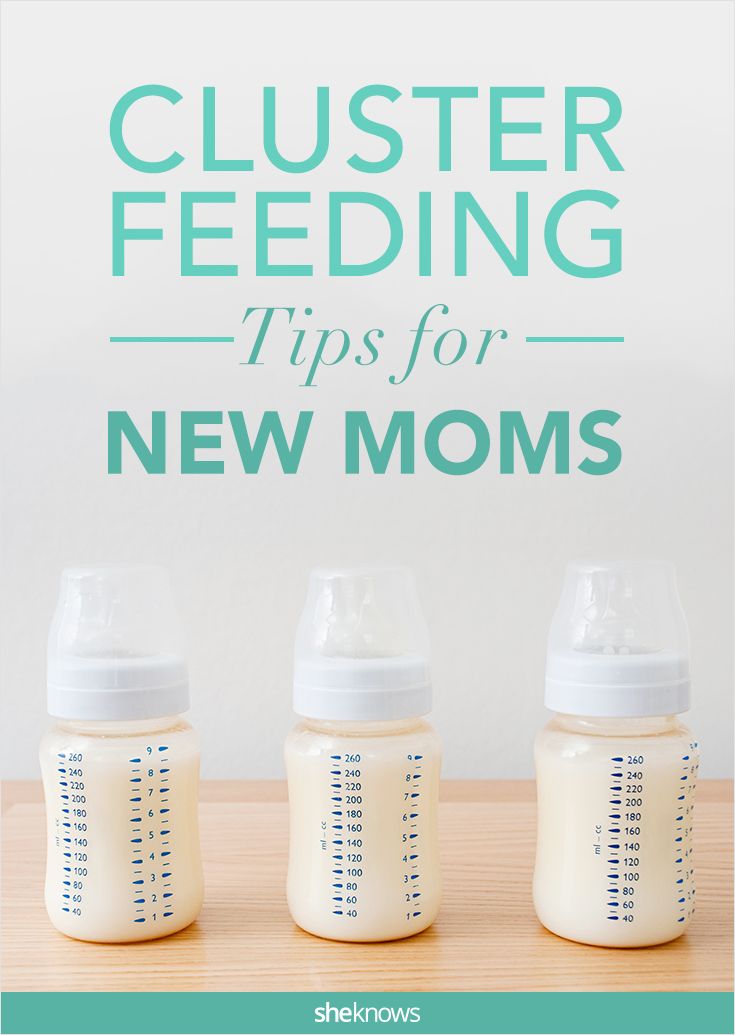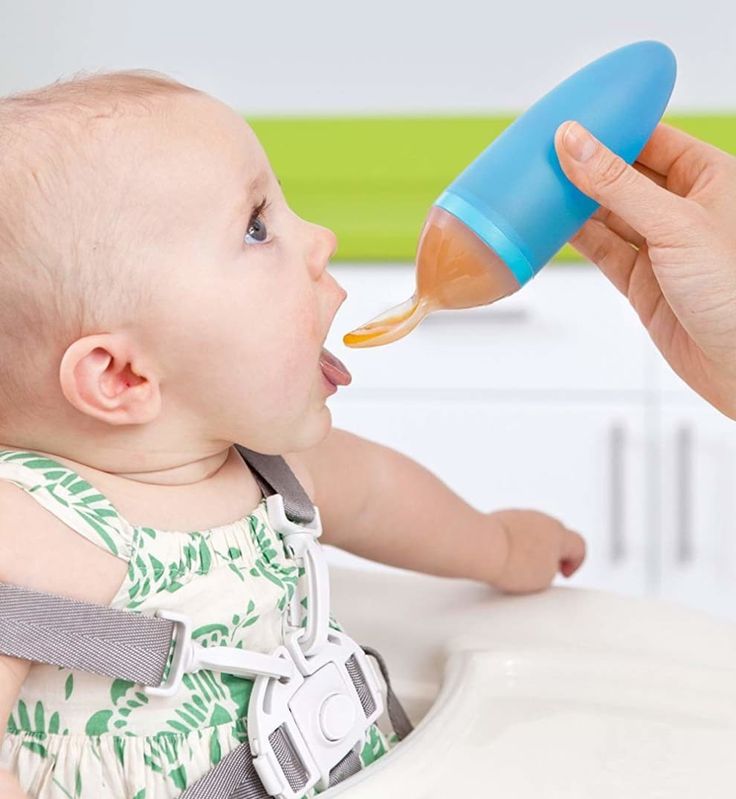Baby feeding milk from breast
Breastfeeding FAQs: How Much and How Often (for Parents)
Breastfeeding is a natural thing to do, but it still comes with its fair share of questions. Here's what you need to know about how often and how long to breastfeed your baby.
How Often Should I Breastfeed?
Newborn babies should breastfeed 8–12 times per day for about the first month. Breast milk is easily digested, so newborns are hungry often. Frequent feedings helps stimulate your milk production during the first few weeks.
By the time your baby is 1–2 months old, he or she probably will nurse 7–9 times a day.
In the first few weeks of life, breastfeeding should be "on demand" (when your baby is hungry), which is about every 1-1/2 to 3 hours. As newborns get older, they'll nurse less often, and may have a more predictable schedule. Some might feed every 90 minutes, whereas others might go 2–3 hours between feedings.
Newborns should not go more than about 4 hours without feeding, even overnight.
How Do I Count the Time Between Feedings?
Count the length of time between feedings from the time your baby begins to nurse (rather than at the end) to when your little one starts nursing again. In other words, when your doctor asks how often your baby is feeding, you can say "about every 2 hours" if your first feeding started at 6 a.m., the next feeding was around 8 a.m., then 10 a.m., and so on.
Especially at first, you might feel like you're nursing around the clock, which is normal. Soon enough, your baby will go longer between feedings.
How Long Does Nursing Take?
Newborns may nurse for up to 20 minutes or longer on one or both breasts. As babies get older and more skilled at breastfeeding, they may take about 5–10 minutes on each side.
How long it takes to breastfeed depends on you, your baby, and other things, such as whether:
- your milk supply has come in (this usually happens 2–5 days after birth)
- your let-down reflex (which causes milk to flow from the nipple) happens right away or after a few minutes into a feeding
- your milk flow is slow or fast
- the baby has a good latch, taking in as much as possible of your areola (the dark circle of skin around your nipple)
- your baby begins gulping right away or takes it slow
- your baby is sleepy or distracted
Call your doctor if you're worried that your baby's feedings seem too short or too long.![]()
When Should I Alternate Breasts?
Alternate breasts and try to give each one the same amount of nursing time throughout the day. This helps to keep up your milk supply in both breasts and prevents painful engorgement (when your breasts overfill with milk).
You may switch breasts in the middle of each feeding and then alternate which breast you offer first for each feeding. Can't remember where your baby last nursed? It can help to attach a reminder — like a safety pin or small ribbon — to your bra strap so you'll know which breast your baby last nursed on. Then, start with that breast at the next feeding. Or, keep a notebook handy or use a breastfeeding app to keep track of how your baby feeds.
Your baby may like switching breasts at each feeding or prefer to nurse just on one side. If so, then offer the other breast at the next feeding. Do whatever works best and is the most comfortable for you and your baby.
How Often Should I Burp My Baby During Feedings?
After your baby finishes on one side, try burping before switching breasts. Sometimes, the movement alone can be enough to cause a baby to burp.
Sometimes, the movement alone can be enough to cause a baby to burp.
Some infants need more burping, others less, and it can vary from feeding to feeding.
If your baby spits up a lot, try burping more often. While it's normal for infants to "spit up" a small amount after eating or during burping, a baby should not vomit after feeding. If your baby throws up all or most of a feeding, there could be a problem that needs medical care. If you're worried that your baby is spitting up too much, call your doctor.
Why Is My Baby Hungrier Than Usual?
When babies go through a period of rapid growth (called a growth spurt), they want to eat more than usual. These can happen at any time. But in the early months, growth spurts often happen when a baby is:
- 7–14 days old
- 2 months old
- 4 months old
- 6 months old
During these times and whenever your baby seems extra hungry, follow your little one's hunger cues. You may need to breastfeed more often for a while.
How Long Should I Breastfeed My Baby?
That's a personal choice. Experts recommend that babies be breastfed exclusively (without formula, water, juice, non–breast milk, or food) for the first 6 months. Then, breastfeeding can continue until 12 months (and beyond) if it's working for you and your baby.
Breastfeeding has many benefits for mom and baby both. Studies show that breastfeeding can lessen a baby's chances of diarrhea, ear infections, and bacterial meningitis, or make symptoms less severe. Breastfeeding also may protect children from sudden infant death syndrome (SIDS), diabetes, obesity, and asthma.
For moms, breastfeeding burns calories and helps shrink the uterus. In fact, breastfeeding moms might return to their pre–pregnancy shape and weight quicker. Breastfeeding also helps lower a woman's risk of diseases like:
- breast cancer
- high blood pressure
- diabetes
- heart disease
It also might help protect moms from uterine cancer and ovarian cancer.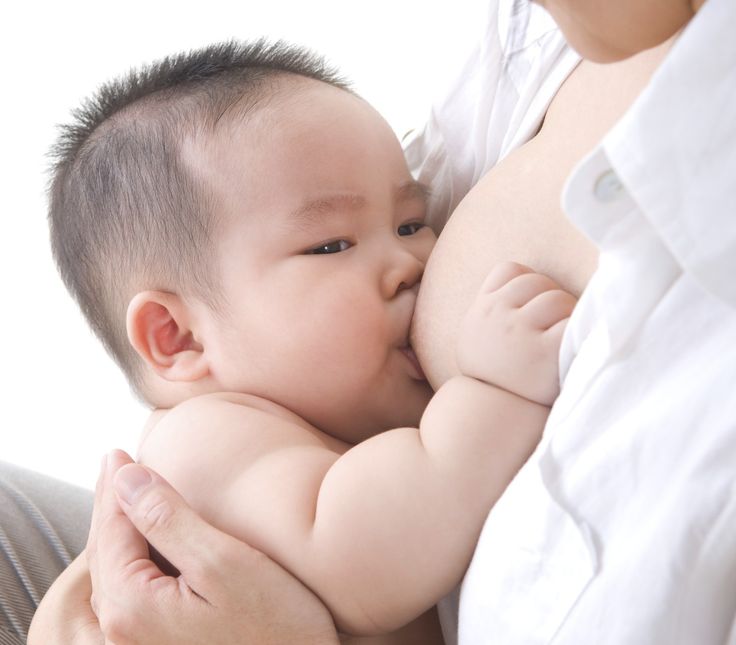
Breastfeeding FAQs: Some Common Concerns (for Parents)
Breastfeeding is natural, but it takes practice to get it right. Here are answers to common concerns about breastfeeding.
Can I Still Breastfeed if I’m Sick?
In most cases, yes — most illnesses are not dangerous to your baby. If you aren’t feeling well, remember that as your body makes antibodies to fight an illness, those antibodies go to the baby through your breast milk.
If you have coronavirus, it’s not likely to get into your breast milk. But you could spread the virus to your infant through tiny droplets that spread when you talk, cough, or sneeze. Talk to your doctor about whether you should continue to breastfeed or instead express your milk so that a healthy caregiver can give it to your baby.
If it’s OK to breastfeed, wear a mask while nursing and wash your hands before and after touching your baby. Otherwise, have a healthy caregiver from your household give your baby your expressed breast milk.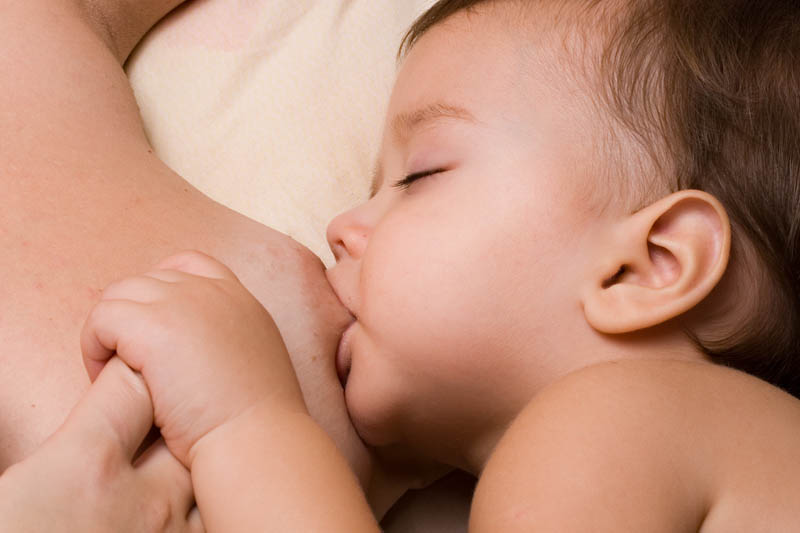 This person should also wear a mask and wash hands before and after touching your baby.
This person should also wear a mask and wash hands before and after touching your baby.
Other illnesses or medicines you take may affect your ability to breastfeed. Talk to a lactation consultant or your doctor before deciding to stop breastfeeding.
My Baby Doesn't Want to Nurse. What's Going On?
Babies may stop nursing — and go “on strike” — for many reasons. Something might be making your baby uncomfortable, such as sore gums from teething, an ear infection, or mouth infection called oral thrush, or even a stuffy or runny nose. Other reasons might be because you smell different — by trying a new soap or perfume — or have changed your diet and your milk tastes different.
Whatever the cause, you and your baby can get over this temporary hurdle. Here are some tips:
- Make the experience as enjoyable as possible for your baby. Praise, caress, and kiss your little one while stopping to comfort whenever he or she gets upset or frustrated.
- Nurse when your baby is sleepy and may be more willing to cooperate.
 Make sure there are no distractions.
Make sure there are no distractions. - Stimulate your milk let-down by hand expressing or pumping before breastfeeding so your baby gets the milk right away.
- Nurse while you're rocking your baby or walking around while carrying your little one in a sling.
Breastfeeding strikes are normal and many last only a few days. Until your nursing schedule is back to normal, pump or hand express to keep your milk supply up and to make sure the baby gets enough to eat. When your child is really ready to stop breastfeeding (or wean), they’ll probably do it over a period of weeks or months.
Is it OK to Give My Baby a Pacifier?
Pacifiers can make bebies less likely to have sudden infant death syndrome (SIDS). They also can soothe babies and satisfy their desire to suck on something. So experts recommend giving babies a pacifier at naptime and bedtime starting from when a baby is 3–4 weeks old. By then, breastfeeding usually is well-established. Continue offering the pacifier until your baby turns 1.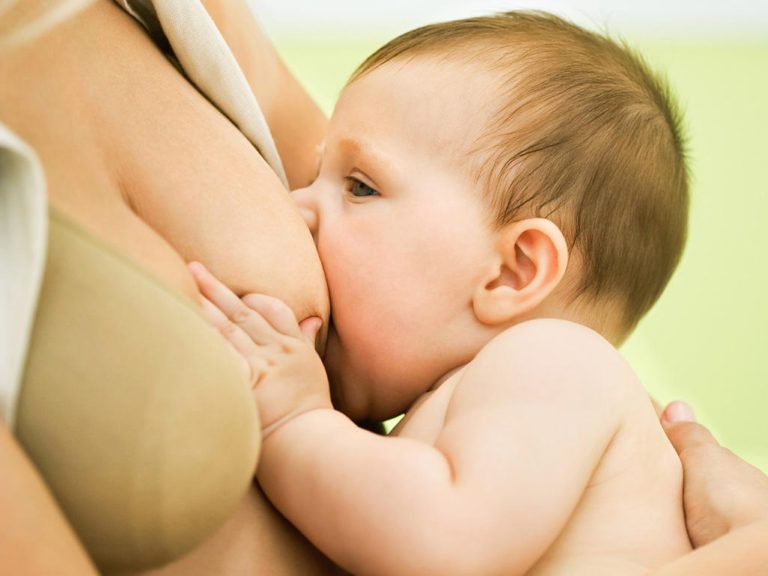 If your baby doesn’t take the pacifier, you don’t need to force it.
If your baby doesn’t take the pacifier, you don’t need to force it.
Some parents worry that giving pacifiers before 3–4 weeks of age could “confuse” babies and make them less likely to take the breast. Or they might worry that it could make it hard to tell when a baby is hungry. But giving a pacifier once in a while during the first month of life (such as during a circumcision) is OK and won’t hurt breastfeeding efforts.
My Baby Is Nursing for Comfort. Is This OK?
If your baby seems to be getting enough milk, but continues to suck for an hour or more, your little one might be nursing for comfort rather than for nourishment. This is called non-nutritive sucking or pacifying.
So, how do you know? A baby that has fed well may stay on the breast but:
- seem satisfied
- stop sucking and swallowing
- play with your nipple
If you notice this happening, you may want to offer your baby’s thumb or hand to suck on. You also could consider giving a pacifier, but only if breastfeeding is well-established (after your baby is 3–4 weeks old).![]()
If you have questions about breastfeeding your baby, talk to your doctor or lactation consultant.
Reviewed by: Jamila H. Richardson, BSN, RN, IBCLC
Date reviewed: January 2021
Is it worth it to breastfeed children up to five years of age or even longer?
Subscribe to our ”Context” newsletter: it will help you understand the events.
Image copyright Getty Images
Should you breastfeed your children until the age of five or even longer?
29-year-old Englishwoman Emma Shardlow Hudson, who breastfeeds her five-year-old daughter and two-year-old son, sometimes at the same time, says it is good for their health and that they very rarely get sick due to "the presence of antibodies in milk."
The UK National Health System advises mothers to breastfeed their babies for as long as they both want to.
Women are generally advised to continue breastfeeding for only the first six months, and then gradually add solid foods to the baby's diet.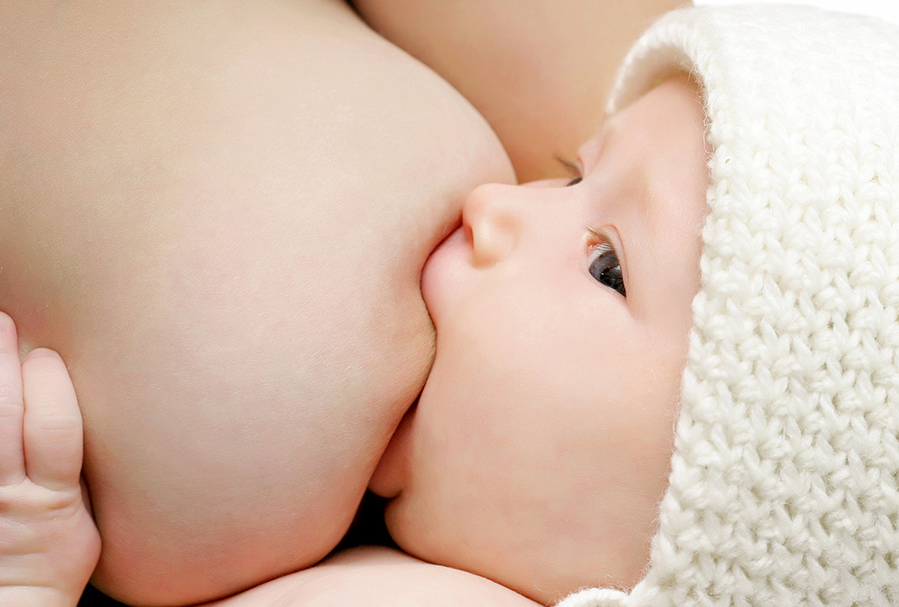
- Model breastfeeding photo sparks heated debate
- Politician breastfeeds her baby for the first time in the Australian Parliament
- Pregnancy and childbirth in Britain: free and without a doctor
British breastfeeding
In the UK, about 80% of mothers follow the advice to breastfeed their newborns after birth, but many stop doing so after a few weeks.
Only about a third of six-month-old babies are still getting their mother's milk, and by the first year of their life this figure drops to 0.5%.
According to a 2016 international survey, the UK has one of the world's lowest rates of breastfeeding women.
Experts say that many women simply find it difficult to start breastfeeding and often don't get the practical help they need in the first days after giving birth and with their first child when they're not yet breastfeeding.
In addition, many women feel uncomfortable doing this in public places and stop breastfeeding, switching to artificial feeding.
Is there anything better than breasts?
Experts agree that breastfeeding is good for the health of both the baby and the mother.
Breast milk protects the infant from infections, diarrhea and vomiting, and reduces the risk of obesity in adulthood.
For mothers, breastfeeding reduces the risk of developing breast and ovarian cancer in the future.
All this is good, but still - until what age should a child be breastfed?
At the moment there is not enough scientific evidence to answer this question unambiguously, so only general recommendations are offered to women.
"It is ideal to breastfeed a baby, along with other foods, until at least the start of the second year," says the UK National Health System website.
Image copyright, Getty Images
Image caption,After the first six months, solid foods other than milk can be gradually introduced to the baby
The World Health Organization believes that breastfeeding can continue at least until the baby is two of the year.
However, Dr. Max Davey of the British Royal Institute of Pediatrics and Child Health believes that there should be a limit to everything, and that breastfeeding should not be continued when it no longer provides any benefits.
"By the age of two, a child should be getting all the nutrients it needs from a normal diet, after that age, there is no additional health benefit from mother's milk," he says.
"It doesn't hurt anything"
Many factors influence a woman's decision to continue or stop breastfeeding. Much depends on whether the new mother returns to work, whether her friends and relatives support her, and how comfortable she feels with breastfeeding.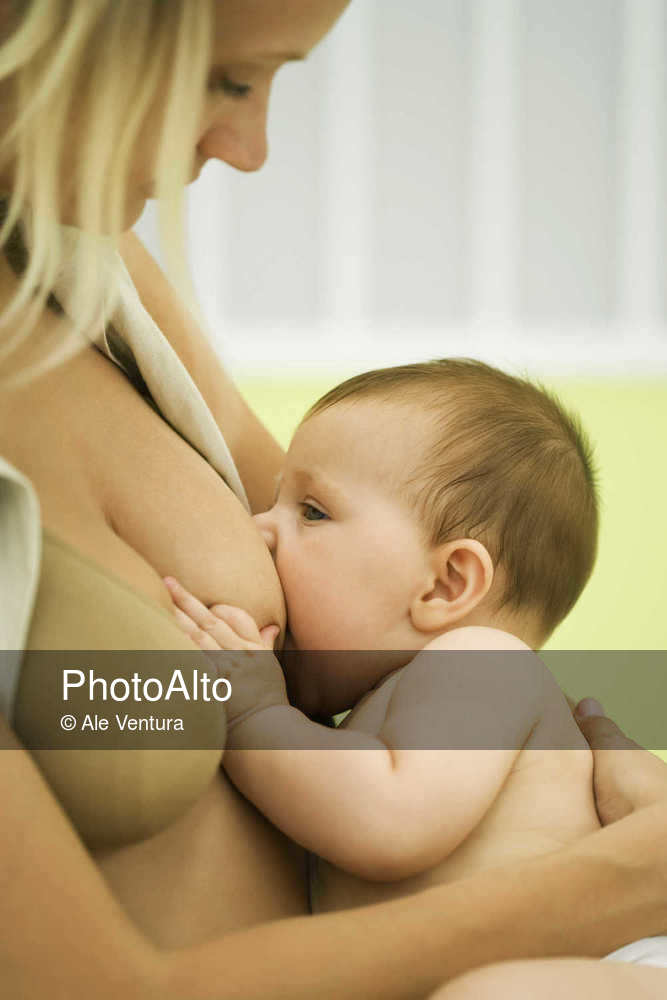
Also remember that breastfeeding often helps develop the emotional bond between mother and child.
"Breastfeeding is a very personal thing," says Dr. Davey.
"This can strengthen the relationship between mother and child, and in any case it will not cause harm, so people should do as they see fit."
Image copyright, Getty Images
But don't forget that some women find it physically difficult, if not impossible, to breastfeed, while others choose not to, for a variety of reasons, and experts say it's their choice. and should be treated with respect.
Breastfeeding your baby with special needs
If your baby has special needs and has difficulty latch-on, there are many other ways to breastfeed
Share this information
Breastfeeding is a serious stress for a baby. This process involves 40 muscles in the lips, tongue, jaw and cheeks, as well as six cranial nerves 1 for coordinating sucking, swallowing and breathing.
If a baby has a congenital disorder or disease that affects these muscles or nerves, the baby may not be physically fit to breastfeed or may not be able to get enough milk while nursing. But this does not mean that your baby should be deprived of extremely healthy breast milk. Moreover, the protective properties of milk and useful substances in its composition are even more necessary for children with special needs.
“Breast milk contains many living cells and growth factors that help boost immunity and prevent inflammation,” explains Dr. Katsumi Mitsuno, professor of internal medicine in pediatrics, Koto Toyosu Hospital at Showa University, “It is important for infants with special needs to give breast milk to prevent infectious diseases and ensure optimal nutrition.”
“Children with congenital and neurological pathologies are more susceptible to respiratory 2.3 and ear 4 infections and diseases of the gastrointestinal tract 5 , and are also more likely to need surgery. Breast milk helps to protect the baby's body from infections and promotes recovery 6 ,” adds Dr. Mitsuno.
Breast milk helps to protect the baby's body from infections and promotes recovery 6 ,” adds Dr. Mitsuno.
Reasons your baby may have difficulty breastfeeding
Cleft lip and/or palate
breastfeeding or supervising physician can show several helpful tricks. Newborns with cleft palate are often unable to breastfeed with sufficient force. 7
Prematurity
If the baby was born prematurely, he may be too weak and not have enough coordination to suckle effectively. Read more about this in the article on breastfeeding premature babies.
Down's syndrome and other chromosomal disorders
Babies with Down's syndrome typically have problems with muscle tone and mouth-tongue coordination that prevents effective breastfeeding. 8 Other chromosomal disorders, such as Edwards syndrome or Patau syndrome, also make breastfeeding difficult.
Neurological disorders
Neurological disorders (disorders of the brain, spine, or nerves) often cause hypotension, the medical term for low muscle tone. Cerebral palsy, 9 hydrocephalus, birth asphyxia, spina bifida, cerebral hemorrhage during childbirth, cerebral malformations and hypoxic-ischemic encephalopathy can cause difficulties in breastfeeding.
Cerebral palsy, 9 hydrocephalus, birth asphyxia, spina bifida, cerebral hemorrhage during childbirth, cerebral malformations and hypoxic-ischemic encephalopathy can cause difficulties in breastfeeding.
Pierre Robin's syndrome
With Pierre Robin's syndrome, the baby's lower jaw is much smaller than normal. Often this is combined with a cleft palate and tongue retraction, making breastfeeding almost impossible. 10
Maxillofacial surgery
If your baby has had oral, tongue or jaw surgery, it may be painful or uncomfortable to suckle for a while.
Expression of milk for children with special needs
Regardless of whether the baby can breastfeed, the first step is to start milk production in order to get enough milk. If the baby is unable to feed directly from the breast, it is important to ensure frequent pumping to collect as much milk as possible. It is necessary to start and stimulate the production of milk as early as possible so that the baby has enough of it now and in the future.
Double pumping is recommended about eight times a day as this is the best way to stimulate a steady supply of milk. 11 Seek help from your doctor or lactation consultant.
“For the first few months, my life revolved around pumping. I set an alarm and woke up every three hours at night to express milk,” recalls Katherine, a mother of two from New Zealand, “Michael had a cleft palate, so he couldn’t suckle, and we had to use a special squeeze bottle. When he ate, I did not take my eyes off him - as soon as I turned away, he could choke, or I did not notice how milk began to flow from his nose, which he did not like very much.
Participating in online support groups for mothers who only feed their babies with expressed milk has helped me a lot. I was able to express milk for my son for seven whole months - it was a real work in the name of love!”
Ways to breastfeed your baby
In some cases, your baby needs to be fed in a special way before he can breastfeed or bottle feed. For example, a feeding tube can be used to deliver milk directly into the baby's stomach. The tube is inserted by the attending physician, usually through the nose or mouth. As soon as the baby can eat in the usual way, the tube will be removed.
For example, a feeding tube can be used to deliver milk directly into the baby's stomach. The tube is inserted by the attending physician, usually through the nose or mouth. As soon as the baby can eat in the usual way, the tube will be removed.
If the baby can swallow but is unable to breastfeed, alternative ways of feeding may be recommended. “For infants suffering from neurological disorders, you can use a drinking tube with a feeding tube or a special silicone nozzle on the finger, which an adult presses a finger against the palate. Some babies find it more convenient to eat with a special cup*, says Dr. Mitsuno. It all depends on the characteristics of the baby. Some people prefer drinking cups.”
“Cup cup feeding* is one of the most popular and safest ways to feed a baby who cannot breastfeed,” Dr. Mitsuno continues. you will be able to breastfeed your baby longer. When feeding from a sippy cup, quite a lot of milk is usually spilled, 12 and the spilled volume must be measured and taken into account if a strictly defined amount of milk is recommended for an infant.
Sarah, a UK mother of three, recalls: “Our eldest daughter is a child with special needs. In particular, she has cerebral palsy. At first she suckled well at the breast, but on the third day her condition worsened, and until the age of two months she was fed expressed breast milk through a nasogastric tube. While she was in the hospital, I pumped milk every three hours.”
Sarah's story ended well: “At about eight weeks, my daughter's condition stabilized, and with the help of a specialist, we resumed breastfeeding. She switched to breastfeeding very easily. By the time she was 12 weeks old and we took her home, she was exclusively breastfed.
Although many people cared for our baby, pumping made me feel important, my special role. It helped me get through that incredibly difficult period.”
If your baby can latch on
If your baby has special needs but is physiologically able to latch on, offer the breast regularly along with other feeding methods. Even if he can't suckle milk from his breast, this "soothing" suckling will help him feel safe, warm, and cared for. It will also help your baby practice suckling skills, making it easier for him to transition to breastfeeding later on.
Even if he can't suckle milk from his breast, this "soothing" suckling will help him feel safe, warm, and cared for. It will also help your baby practice suckling skills, making it easier for him to transition to breastfeeding later on.
If your baby can breastfeed but is not getting enough milk, talk to your doctor about how much pumped milk you need to supplement and how best to give it. You can give your baby expressed milk while breastfeeding with a supplemental feeding system* or use one of the devices mentioned above.
If your baby is recovering from maxillofacial surgery (eg for a cleft lip or palate), breastfeeding may be uncomfortable. However, offer your baby the breast along with other ways of feeding, according to some studies, sedative sucking can relieve pain. 13
“Everyone told me that because of the cleft lip, my son would not be able to breastfeed. But in fact, he was good at it, even though he injured my nipples while doing it,” recalls Nicola, a mother of three children from the UK, “After the operation, he was in pain at first, but soon everything returned to normal.![]() He began to latch on very differently so it took us both some time to adjust, but pretty soon he was able to breastfeed normally and I breastfed him for up to a year.”
He began to latch on very differently so it took us both some time to adjust, but pretty soon he was able to breastfeed normally and I breastfed him for up to a year.”
Literature
1 Walker M. Breastfeeding management for the clinician. 4th edition. Burlington, MA, USA: Jones & Bartlett Publishers; 2016. 738 p. — Walker, M., Breastfeeding Considerations for Practitioners, 4th edition. Burlington, Massachusetts, USA: Jones & Bartlett Publishers; 2016. Pp. 738.
2 Seddon PC, Khan Y. Respiratory problems in children with neurological impairment. Arch Dis Child. 2003;88(1):75-78. - Seddon PS, Khan Y, "Respiratory problems in children with neurological deficits." Arch Dis Child. 2003;88(1):75-78.
3 Proesmans M. Respiratory illness in children with disability: a serious problem?. Breathe. 2016;12(4): e 97. - Proesmans M., "Respiratory diseases in children with disabilities: a serious problem?" Breeze (Breath). 2016;12(4):e97.
- Proesmans M., "Respiratory diseases in children with disabilities: a serious problem?" Breeze (Breath). 2016;12(4):e97.
4 Zeisel SA, Roberts JE. Otitis media in young children with disabilities. Infants Young Child. 2003;16(2):106-119. - Zeisel SA, Roberts JI, "Otitis media in young disabled children". Infants Young Children. 2003;16(2):106-119.
5 González DJ et al. Gastrointestinal disorders in children with cerebral palsy and neurodevelopmental disabilities. An Pediatr (Barc). 2010;73(6):361. - Gonzalez D.J. et al., Gastrointestinal Disorders in Children with Cerebral Palsy and Neurological Diseases. An Pediatrician (Bark). 2010;73(6):361.
6 Salvatori G et al. Human milk and breastfeeding in surgical infants. Breastfeed Med . 2014;9(10):491-493. - Salvatori J. et al., Breast milk and breastfeeding in children undergoing surgery. Brestfeed Med (Breastfeeding Medicine). 2014;9(10):491-493.
- Salvatori J. et al., Breast milk and breastfeeding in children undergoing surgery. Brestfeed Med (Breastfeeding Medicine). 2014;9(10):491-493.
7 Reilly S et al. ABM Clinical Protocol# 17: Guidelines for breastfeeding infants with cleft lip, cleft palate, or cleft lip and palate, Revised 2013 Breastfeed Med . 2013;8(4):349-353. - Reilly S. et al., AVM Clinical Protocol #17: Guidelines for breastfeeding children with cleft lip, cleft palate, or cleft lip and palate, 2013 edition. Brestfeed Med (Breastfeeding Medicine). 2013;8(4):349-353.
8 Thomas J ABM Clinical Protocol #16: Breastfeeding the Hypotonic Infant, Revision 2016. Breastfeed Med 2016;11(6). - Thomas J. et al., "AVM Clinical Protocol #16: Breastfeeding a Baby with Reduced Muscle Tone, Revision 2016." Brestfeed Med (Breastfeeding Medicine). 2016;11(6).
2016;11(6).
9 Wilson EM, Hustad KC. Early feeding abilities in children with cerebral palsy: a parental report study. J Med Speech Lang Pathol. 2009: nihpa 57357. - Wilson I.M., Khustad K.S., "Early independent feeding ability in children with cerebral palsy: a study of parent reports". J Med Speech Lang Patol. 2009: nihpa 9 E et a. Feeding-facilitating techniques for the nursing infant with Robin sequence. Cleft Palate Craniofac J 2006;43(1):55-60. — Nassar, I. et al., Feeding Ease Techniques for Babies with Robin Syndrome. Kleft Palet Kraniofak J. 2006;43(1):55-60. 9 et al . . Principles for maintaining or increasing breast milk production.

